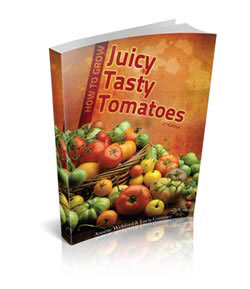Growing Peppers For The Pot
Whether you call them peppers or capsicums, these vegetables are one of the easiest and most rewarding to grow. They are also delicious both raw and cooked, and they make a versatile ingredient in many recipes.
Related to the chilli plant, capsicums are more usually referred to as sweet or bell peppers, not surprisingly because of the taste and shape. They are regarded as warm-weather vegetables and have a similar “culture” to tomatoes and aubergines (or eggplants).
There are a number of different sweet pepper cultivars, some of which have a slightly thicker “skin” than others, and some of which are sweeter than others. Generally, red and yellow peppers are sweet and their skin is thin. Green peppers, on the other hand, have a more pungent (slightly bitter) and less subtle taste. In fact many people avoid eating raw green peppers because of this.
They are not in any way related to the true pepper, Piper nigrum, which grows on vines that are indigenous to India and Malaysia, and which produces corns which we generally grind for cooking and flavouring food.
While you are likely to pay as much as double for sweet yellow and red peppers than green peppers in the supermarket, all types are as easy to grow as others. They aren’t particularly fussy about the soil they grow in and you can get a good crop off just a few plants. Like most vegetables, you will find that organic matter dug into the soil during the planning stages is an advantage. Like tomatoes, they benefit from being planted in soil that is well drained. However, when the weather is hot, it is essential to water regularly; and be warned that if the soil cannot hold the moisture, flowers and young, developing fruit are likely to drop off.
You can grow peppers from seed sown in seed beds, or from seedlings raised in a commercial nursery. If you have the space, you can also sow directly in spring, allowing 20 mm to 25 mm between every three or four seeds.
A wonderful thing about peppers is that if you plant them in well prepared soil, and water them regularly, that is about all you have to do. Within three months you should have your first crop – and they will continue to produce for several months.
The biggest danger is that the plants will suffer from bacterial wilt or sun scald which causes the skin to lighten and sink … eventually leading to rot – unless you rescue the fruit and cut off the scalded sections.
One of the most popular ways to serve peppers is to stuff them and then roast in a moderate oven for about an hour or until they are tender. There are numerous suitable types of stuffing including rice mixed with tomato and tuna, and a chopped onion, garlic and herb mix combined with dry breadcrumbs and two or three cheeses (for instance ricotta or another white cheese and grated Parmesan).
You can garnish salad with raw peppers, sliced into thin strips. Alternatively, for a completely different flavour,roast the fruit under a hot grill in a pan moistened with olive oil. When the skin blisters and goes black you can peel it easily. Allow to cool before peeling and slicing for salads or garnish.
If you enjoy cooking, once you start experimenting with peppers, you’re going to want to plant more in your garden.













